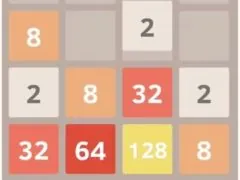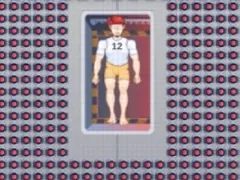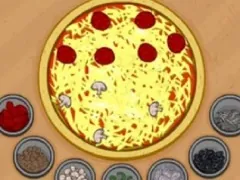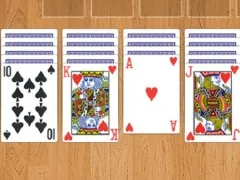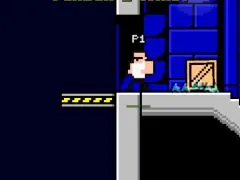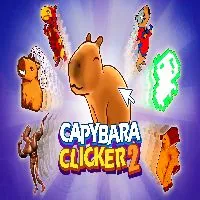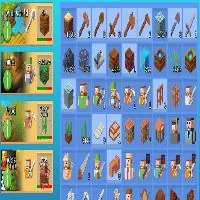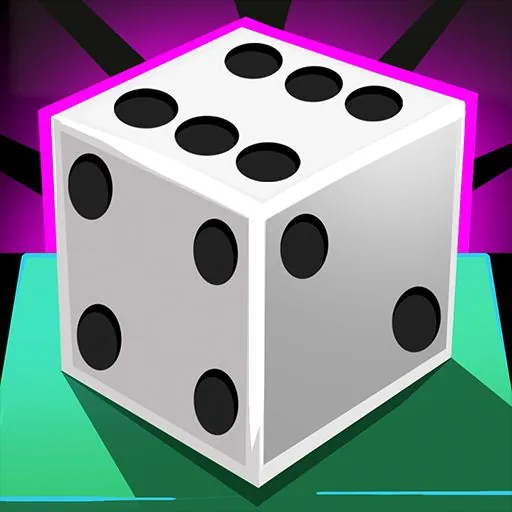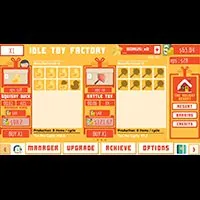PIANO TILES
SIMILAR GAMES
Description
Piano Tiles - GitLab Games
About Piano Tiles - GitLab Games
Welcome to the definitive guide for Piano Tiles hosted on the GitLab Games platform. In this comprehensive exploration, we delve into the intricacies of this immensely popular and engaging rhythm game, offering insights and strategies that will elevate your gameplay experience to unprecedented levels. Our objective is to provide an unparalleled resource, brimming with detailed information and actionable advice designed to immerse you fully in the captivating world of Piano Tiles.
Understanding the Core Gameplay of Piano Tiles
At its heart, Piano Tiles is a deceptively simple yet profoundly challenging game that tests your reflexes, precision, and musical timing. The fundamental mechanic involves tapping on black tiles as they descend from the top of the screen, coinciding with the beat of the music. The sensation of playing is akin to performing on a virtual piano, where each correct tap produces a musical note, weaving a symphony of sound as you progress. Missing a tile, or tapping a white tile, results in an immediate end to the game. The speed and complexity of the descending tiles increase progressively, demanding heightened concentration and swift finger movements.
Exploring Different Modes and Features on GitLab Games
The GitLab Games iteration of Piano Tiles offers a variety of engaging modes designed to cater to different player preferences and skill levels. These modes are crucial for developing a well-rounded understanding of the game's mechanics and for pushing your limits. We will meticulously examine each of these modes, providing specific advice on how to excel within them.
Classic Mode: The Foundation of Your Piano Tiles Journey
The Classic Mode serves as the bedrock of Piano Tiles. In this mode, the primary objective is to tap as many black tiles as possible in a continuous sequence without making any errors. The game begins at a manageable pace, but the tempo gradually accelerates, presenting an ever-increasing challenge. Success in Classic Mode hinges on developing a consistent rhythm and maintaining focus amidst the escalating speed. Many players find that practicing with a metronome, even outside the game, can significantly improve their ability to internalize the game's tempo. Paying close attention to the visual cues of the tiles and their proximity to the bottom of the screen is paramount. Early mastery of this mode is essential for building the foundational skills required for more advanced challenges.
Arcade Mode: A Symphony of Speed and Strategy
Stepping up the intensity, Arcade Mode introduces an exhilarating twist to the familiar gameplay. Here, players are challenged to achieve the highest possible score within a set time limit. This mode often incorporates power-ups and special tile types that can dramatically alter the flow of the game, adding layers of strategic depth. For instance, special tiles might offer score multipliers, temporarily slow down the game, or grant brief periods of invincibility. The key to excelling in Arcade Mode is not just speed, but also smart decision-making regarding the use of any available power-ups. Learning to anticipate the appearance of these special tiles and reacting accordingly is a vital skill. Mastering the timing of your taps becomes even more critical, as even minor hesitations can lead to a loss of valuable points.
Zen Mode: Mastering Endurance and Precision
For those who wish to hone their endurance and precision without the pressure of a strict timer, Zen Mode offers a perfect sanctuary. In Zen Mode, the goal is to tap as many tiles as possible within a specific timeframe, typically a minute or two. This mode emphasizes sustained accuracy and a steady rhythm, allowing players to practice their tapping technique under less frenetic conditions. It's an excellent mode for building muscle memory and for improving overall consistency. Focusing on a smooth, uninterrupted flow of taps is the primary objective. Players who find themselves struggling with the initial stages of Classic Mode often benefit greatly from extended practice sessions in Zen Mode.
Relay Mode: Teamwork and Tactical Succession
Introducing a collaborative dimension, Relay Mode invites players to team up and tackle the challenges of Piano Tiles together. In this mode, players take turns tapping tiles, with each player responsible for a certain segment of the song. This mode requires excellent communication and coordination amongst team members. One player’s mistake can cost the entire team, making precision and reliability even more crucial. Strategizing who tackles which section, especially the faster or more complex parts, can be a winning tactic. Building a rapport with your teammates and understanding each other’s strengths and weaknesses is vital for success in Relay Mode. This mode fosters a sense of camaraderie and shared achievement, making it a highly rewarding experience.
Advanced Techniques for Mastering Piano Tiles
Beyond understanding the different modes, mastering Piano Tiles involves adopting specific techniques that can significantly improve your performance. These techniques are honed through dedicated practice and a deep understanding of the game's nuances.
The Importance of Finger Placement and Hand Positioning
Optimal finger placement and hand positioning are fundamental to achieving high scores and preventing fatigue during extended play sessions. We recommend a relaxed grip on your device, ensuring your wrists are not strained. Many experienced players utilize multiple fingers, strategically placing them over the approaching tiles. For instance, using the index and middle fingers of both hands can allow for faster and more fluid transitions between tiles, especially in the faster modes. Experiment with different finger arrangements to find what feels most comfortable and efficient for your individual hand size and dexterity. The goal is to create a system where your fingers can move seamlessly across the screen with minimal wasted motion. Maintaining good posture is also important to avoid discomfort during long gaming sessions.
Developing Rhythmic Accuracy and Timing
The core of Piano Tiles lies in its rhythmic accuracy and precise timing. This is not merely about tapping quickly; it’s about tapping at the exact moment the tile reaches the designated tapping zone at the bottom of the screen. Listening intently to the music is paramount. The soundtrack is designed to guide your taps. As you progress, the music often becomes more complex, but the fundamental rhythm remains the same. Practicing with the audio cues as your primary guide, rather than solely relying on visual cues, can dramatically improve your timing. Many players find it beneficial to close their eyes for brief periods during practice to truly attune themselves to the rhythm of the music.
Leveraging Power-Ups and Special Tiles Effectively
In modes that feature them, understanding and effectively leveraging power-ups and special tiles can be the difference between a mediocre score and a truly exceptional one. These elements add a dynamic layer to the gameplay. For example, a “Slow Down” power-up can provide a much-needed reprieve during a particularly intense passage, allowing you to regain your composure and accuracy. Conversely, “Score Multiplier” tiles can dramatically boost your score if tapped correctly. It is essential to learn the visual and auditory cues associated with each type of special tile and power-up to react instantaneously. Prioritizing certain power-ups over others, depending on the current game situation, is a strategic skill that develops with experience.
Strategies for Overcoming High-Speed Challenges
As the game progresses, the speed of the descending tiles increases exponentially, presenting a significant challenge. To overcome these high-speed sections, consider adopting a “rolling” tapping technique. This involves a rapid, almost continuous flicking motion of your fingers rather than individual, deliberate taps. This technique requires practice but allows for incredibly fast sequences of taps. Another strategy is to focus your gaze slightly ahead of the current tiles, anticipating where the next ones will appear. This proactive visual approach can help you prepare your fingers for the rapid succession. Maintaining a calm and focused mindset is also crucial; panic can lead to uncharacteristic errors.
The Benefits of Regular Practice on GitLab Games
Consistent and focused practice is undeniably the most critical factor in achieving mastery in Piano Tiles. The GitLab Games platform provides a stable and accessible environment for honing your skills. Regular engagement with the game, even for short periods daily, yields significant improvements over time. This consistent exposure allows for the development of muscle memory, refined timing, and enhanced pattern recognition. We encourage players to set small, achievable goals for each practice session. For instance, aiming to beat your previous high score by a small margin, or to successfully complete a particular song without mistakes. The cumulative effect of these small victories contributes to substantial long-term progress. Don't be discouraged by initial difficulties; persistence is key to unlocking your full potential in Piano Tiles.
Community and Competition on GitLab Games
While Piano Tiles is often played as a solitary pursuit, the GitLab Games platform can foster a sense of community and friendly competition. Engaging with other players, sharing tips, and even participating in informal challenges can enhance the overall gaming experience. While direct leaderboards might vary, the spirit of striving for improvement and pushing personal boundaries is a universal aspect of the Piano Tiles community. Celebrating personal bests and learning from the achievements of others are valuable aspects of this shared journey. The accessibility of GitLab Games means that players from all backgrounds can connect and enjoy the thrill of this engaging rhythm game together.
Conclusion: Your Journey to Piano Tiles Mastery Begins Now
Embarking on your Piano Tiles adventure on GitLab Games is an invitation to a world of rhythmic challenge, visual spectacle, and musical delight. By understanding the core mechanics, exploring the diverse game modes, implementing advanced techniques, and dedicating yourself to consistent practice, you are well on your way to achieving mastery. We are confident that the detailed insights provided within this guide will serve as an invaluable resource, empowering you to unlock new levels of skill and enjoyment. The journey is as rewarding as the destination, and we encourage you to embrace every tap, every note, and every challenging crescendo. Dive in, play on, and let the music guide your fingers to victory on GitLab Games.
Piano Tiles is a fast-paced rhythm game that challenges players to tap on the black tiles while avoiding the white ones, all set to a variety of musical compositions ranging from classical masterpieces to contemporary hits. Each tap must be timed with the rhythm of the music, and accuracy is crucial as a single mistake means the game is over. As players progress, the speed of the tiles increases, testing reflexes and promoting a thrilling gameplay experience.
Enhance Your Experience with Various Modes
The game features several modes that cater to different skills levels and musical tastes. Whether it’s racing against the clock in Time Trial, playing through preset songs in Classic mode, or exploring lengthy compositions in Endless mode, Piano Tiles offers a dynamic platform for improving hand-eye coordination and musical perception. New songs are regularly added, keeping the game fresh and engaging for returning players. This simple yet addictive game has captured the attention of millions, offering a compact musical challenge at your fingertips.
